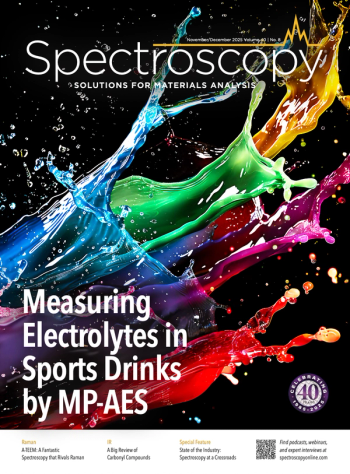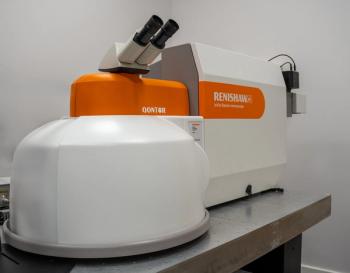
Celebrate National Space Day with Spectroscopy
Spectroscopy is teaming up with the Society for Applied Spectroscopy (SAS) to celebrate National Space Day on May 2.
National Space Day, observed on the first Friday in May, is a global educational initiative that highlights the benefits of space exploration. Spectroscopy has been instrumental in deepening our understanding of the universe, powering technologies like the Hubble Space Telescope, the James Webb Space Telescope, and other cutting-edge tools used to study the cosmos (3). In this upcoming content series, developed in partnership with SAS, we spotlight the work of experts from around the world who are pushing the boundaries of science and space exploration through spectroscopy. Building on the Society for Applied Spectroscopy’s successful Spectroscopy on Mars initiative, this series will showcase the science driving the future of planetary exploration.
Spectroscopy plays a vital role in space exploration by enabling scientists to analyze the composition, structure, and physical properties of celestial bodies from a distance (1,2). By measuring how matter interacts with electromagnetic radiation—whether through absorption, emission, or scattering—spectroscopy provides key insights into the chemical makeup of planets, stars, and interstellar materials (2). Different types of spectroscopies, such as infrared (IR), ultraviolet (UV), Raman, and mass spectrometry (MS), allow researchers to identify elements and molecules, detect the presence of water or organic compounds, and assess atmospheric conditions, all without requiring direct sampling.
On Mars, spectroscopy has become an essential tool for investigating the planet’s geology, climate history, and potential for past or present life. Instruments on rovers like Perseverance and Curiosity use a variety of spectroscopic techniques, including laser-induced breakdown spectroscopy (LIBS), X-ray fluorescence, and Raman spectroscopy, to study rocks and soil (3,4). These methods help scientists detect key elements like carbon, hydrogen, nitrogen, and oxygen—building blocks of life—as well as identify minerals that form in the presence of water (3,4). As a result, these techniques contribute to a deeper understanding of Mars’ environment and guide the search for signs of life beyond Earth.
We are looking forward to sharing this content series with you on May 2nd.
References
- Wetzel, W. Spectroscopy and Space Exploration: A One-Day Content Series on July 20th. Spectroscopy. Available at:
https://www.spectroscopyonline.com/view/spectroscopy-and-space-exploration-a-one-day-content-series-on-july-20th (accessed 2025-04-17). - National Aeronautics and Space Administration, Spectroscopy. NASA.gov. Available at:
https://science.nasa.gov/mission/hubble/science/science-behind-the-discoveries/hubble-spectroscopy/ (accessed 2025-04-17). - Workman, Jr., J. SuperCam Raman Spectroscopy Unlocks Jezero Crater’s Geological Secrets. Spectroscopy. Available at:
https://www.spectroscopyonline.com/view/supercam-raman-spectroscopy-unlocks-jezero-crater-s-geological-secrets (accessed 2025-04-17). - Wetzel, W. New Study Reveals How NASA’s Perseverance Rover Uses LIBS for Precise Mars Rock Analysis. Spectroscopy. Available at:
https://www.spectroscopyonline.com/view/new-study-reveals-how-nasa-s-perseverance-rover-uses-libs-for-precise-mars-rock-analysis (accessed 2025-04-17).
Newsletter
Get essential updates on the latest spectroscopy technologies, regulatory standards, and best practices—subscribe today to Spectroscopy.



